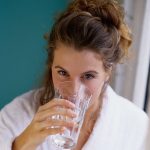
In state after state, doors are quickly slamming shut on the ability of doctors to provide gender-affirming care for transgender minors. The newest restriction is set to take effect Thursday in Florida, where that state’s Board of Medicine decided last month to ban the use of all puberty blockers, hormone therapies and/or surgeries for any patient under 18, whether or not those minors have parental approval for such care. The ban stems from an effort first launched by Gov. Ron DeSantis and the Florida Surgeon General back in April 2022, when the pair issued a joint call for the ban. That was followed in August 2022 by the Florida Agency for Health Care Administration’s rewriting of Medicaid coverage rules that disallowed reimbursements for any gender-affirming treatments involving both minors and adults. Minors who were already receiving puberty blockers before the new ban may continue taking them. Otherwise, the ban is complete: Florida transgender minors are no longer allowed access to gender-affirming medical care, even in a clinical trial. As a board ruling — rather than a new state law — Florida doctors who violate the ban will not face criminal charges, though they will be subject to censure, fines and the potential loss of their right to practice medicine in the state. Last week, Republican state lawmakers tabled a bill that would have gone a… read on > read on >



























-300x200.jpg)










